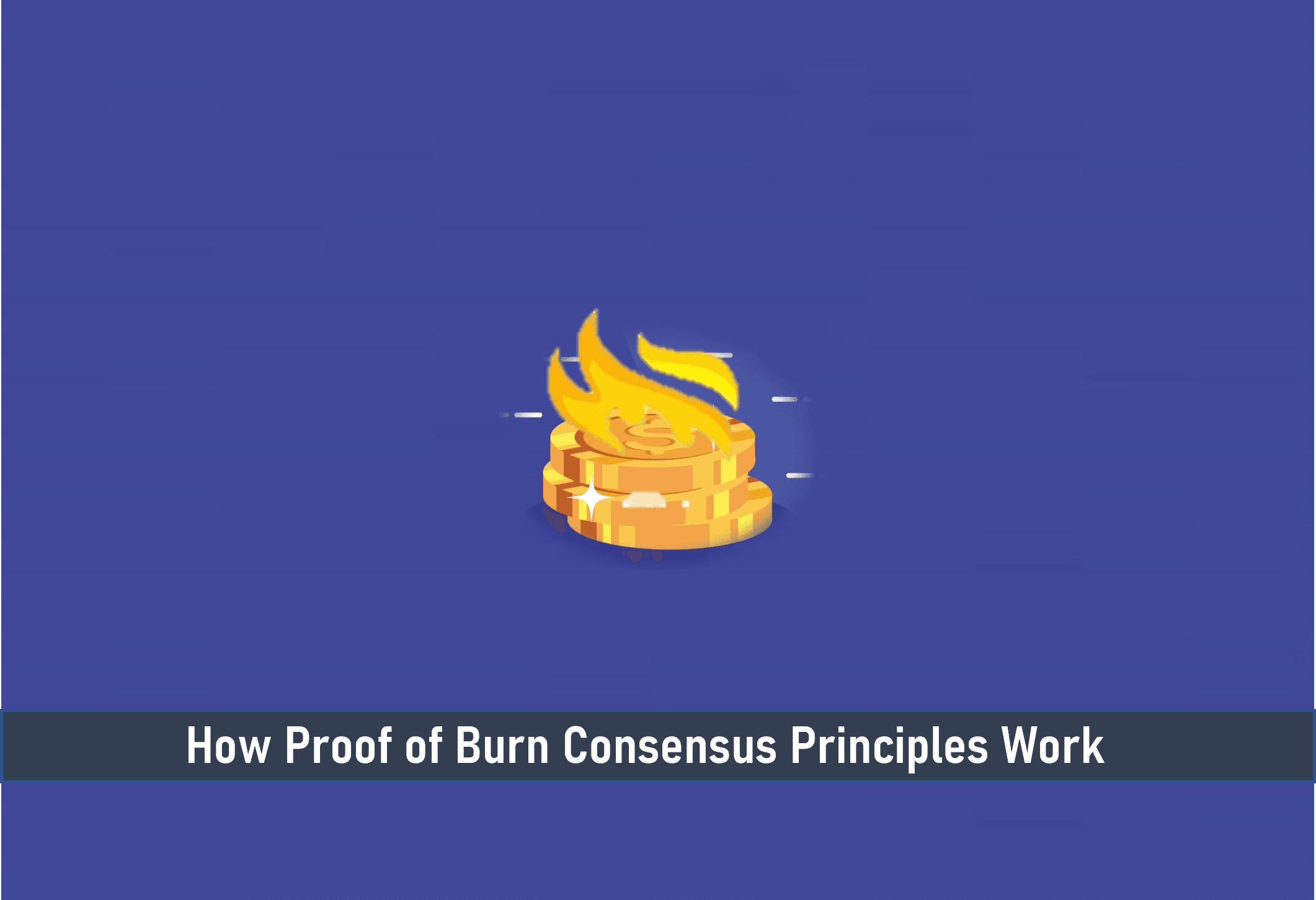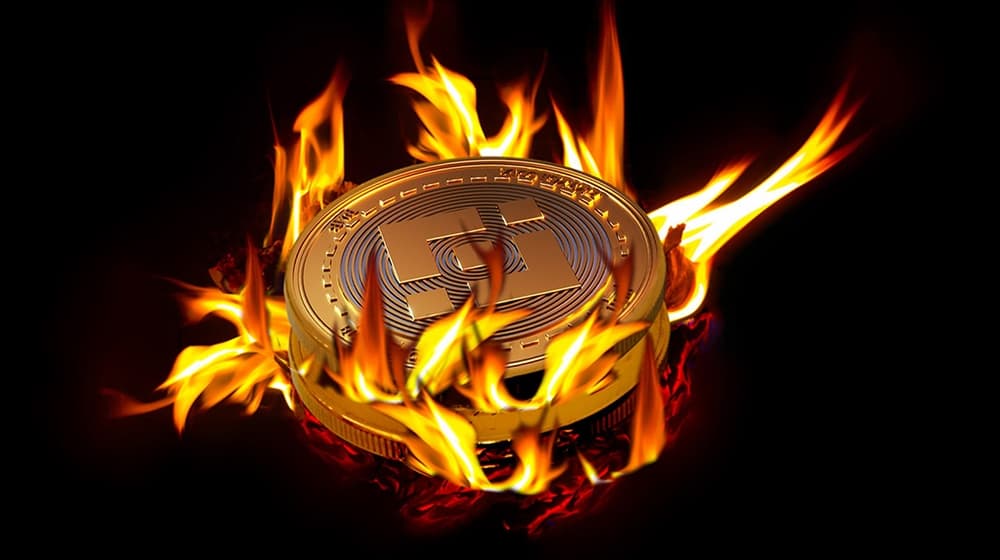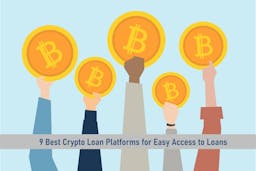
What is Proof of Burn?
While most blockchain frameworks use either a Proof of Work (PoW) or a Proof of Stake (PoS) consensus method, the Proof of Burn (PoB) algorithm is being investigated as a feasible alternative.
Proof of burn is one of the several consensus mechanism methods used by blockchain networks to ensure that all participating nodes agree on the correct and accurate state of the blockchain network, hence eliminating the possibility of cryptocurrency double-spending.
SEE ALSO: How Does Proof-of-Stake Improve Proof-of-Work?

Key Takeaways
• Proof of burn (POB) is an alternative consensus algorithm that tries to solve Proof of Work’s energy consumption problem. It is commonly defined as Proof of Work with no energy usage.
• Since the technique of burning coins represents virtual mining power, the more coins a user burns in favor of the system, the more mining power he/she possesses and, as a result, the better the chances of being voted as the next block validator.
• Proof of burn has the potential to accelerate the rate at which cryptocurrencies attain universal legitimacy.
Proof of burn adopts the principle of “burning” or “destroying” crypto tokens by miners in exchange for mining rewards.
Proof of Burn (PoW) Explained
The blockchain network is the primary cryptocurrency database that manages all transaction-related data. Blockchain is made up of a series of blocks, and all transactions are managed and gathered in these separate blocks, which serve as the blockchain’s data storage units.
A block is only recorded when the blockchain nodes agree on a set of transactions that the nodes consider to be genuine.
Proof of burn (POB) is a consensus algorithm that tries to solve POW’s energy consumption excesses. It is commonly defined as an alternative Proof of Work with no energy usage.
It follows the principle of assisting miners to “burn” or “destroy” virtual currency tokens, granting them the ability to write blocks in the dimension of the tokens burned.
In other words, by performing coin burns, individuals may demonstrate their commitment to the network by gaining the ability to “mine” and verify transactions.
Since the technique of burning coins represents virtual mining power, the more coins a user burns in favor of the system, the more mining power he/she possesses and, as a result, the better the chances of being voted as the next block validator.
Miners burn tokens by transferring them to a verifiable, unspendable address. This strategy uses no other means than the burnt coins to ensure that the network stays dynamic and adaptable.
Miners may burn local coins or the currency of an alternate chain, such as Bitcoin, depending on the implementation. In exchange, they are compensated in the blockchain’s local currency token.
To avoid any unfair advantages for early adopters, the PoB has developed a system that allows for the intermittent burning of cryptocurrency to maintain mining power.
The energy of burned coins “decays” or diminishes somewhat each time a new block is mined, similar to how mining equipment becomes obsolete over time.
It encourages regular migration by miners rather than a one-time early investment. To compete with an ambitious end goal, miners may need to invest in improved equipment regularly, comparable to the labor conducted in physical mining rigs as technology advances.
Proof of Burn implementation is customizable. For example, Slimcoin, a virtual currency system that uses POB, allows miners to burn coins, which not only gives them the strength to battle for the next block but also gives them the possibility to gain blocks over a longer period at least a year.
Slimcoin’s PoB implementation combines three algorithms: PoW, PoS, and the fundamental PoB theory.
The process of burning coins involves PoW; the more coins burned, the more chances for mining power, which ensures PoS, and the whole ecosystem supports the PoB concept.
Advantages and Disadvantages of Proof-of-Burn
Advantages
The primary benefit of a Proof of Burn protocol is that it consumes a fraction of the energy compared to the Proof-of-Work-based blockchain.
Indeed, due to the aforementioned computational efforts that a Proof of Work algorithm fosters is in its nodes. Mining on the network requires more and more resources to engage in.
That means ever-more-powerful technology and skyrocketing electricity prices, which, when combined in the context of huge networks like bitcoin, maybe rather harmful to the environment.
This is still a big worry for the popular acceptability of proof-of-work-based cryptocurrencies like Bitcoin, and by addressing it.
There is no need for pricey, top-tier processing power and the apocalyptic power bills that come with it since Proof of Burn endows virtual mining power according to how much the node is burnt.
This also achieves a secondary goal: it allows fresh blockchains to be bootstrapped on previously created “work.”
Because the Proof of Burn protocol is based on burning coins that have been mined, the initial computer power expended remains a source of scarcity even on the second blockchain with a new currency when employing Proof of Burn in this manner.
SEE ALSO: Top Cryptocurrencies That Use The Proof of Stake Consensus Mechanism
SEE ALSO: What You Need to Know About Proof-of-Work Consensus Mechanism
Disadvantages
One of the most obvious disadvantages of a Proof of Burn protocol is the process of mining itself after the coins have been destroyed.
Mining on a Proof of Burn network may be slower than mining on a Proof of Work blockchain.
This is because the powerful equipment utilized in a Proof of Work Blockchain has been replaced with the system’s virtual “mining rig,” which yields a lower hash rate than specialized hardware installations.
While Proof of Work is an extremely tasking endeavor, with enormous upfront expenses associated with acquiring the processing capacity necessary for a sustainable mining operation, Proof of Burn gives no guarantee that the cost of the initial coin burning will be returned through mining in a timely way or even at all.
The coin burn just buys you a piece of virtual mining equipment of a particular size; after that, you’re in the same competitive mining race as any Proof of Work system.
As of now, Proof of Burn suffers from the same disadvantage as Proof of Stake in that the system favors those prepared to freeze or spend bigger quantities of cash — presumably as a way of collateral and discouraging any efforts at fraudulent activities.
This, of course, has some validity, but the most frequently cited shortcoming of such a model is that the selection process involves simply the staked or burnt amount, rather than the amount relative to the stakeholder’s or burner’s holdings.
As a result, what appears to be a significantly bigger sum than that of another miner may in reality be much smaller in proportion to that individual’s entire holdings, providing a weaker deterrent to misconduct than intended.
SEE ALSO: 8 Crypto Blockchain Consensus Mechanisms Available
SEE ALSO: How Many Polygon Matics is Needed to Become a Validator
Frequently Asked Questions (FAQs)
What is a burn transaction?
It is the act of transferring cryptocurrency tokens to a wallet that does not have an access key. Without the secret key, no one can access the tokens, and they are gone forever.
What happens when a token burning occurs?
A specified quantity of cryptocurrency is permanently withdrawn from circulation when token burning happens. Simply put, token burning reduces supply while maintaining demand.
In theory, this should enhance purchase pressure and provide an incentive for investors to hold onto their assets.
Is it possible to boost the price of a cryptocurrency by burning it?
The number of coins accessible in the digital currency market decreases as developers/miners burn the coins. As a result, the coin’s value will rise (at least theoretically, it should).
Final Thoughts
Proof of Burn is another consensus mechanism just like others such as Proof of Work and Proof of state. PoB ensures that the blockchain network is maintained and in an accurate state.
Proof of Burn abides by the law of “burning” or “destroying” the currency owned by miners in exchange for mining rewards.
Read More




